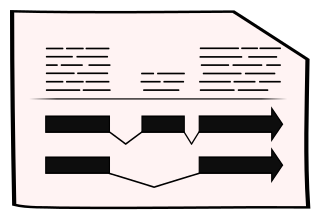Steinernema carpocapsae
BioProject PRJNA202318 | Data Source University of California, Irvine | Taxonomy ID 34508
About Steinernema carpocapsae
Steinernema carpocapsae is a parasitic nematode capable of infecting a broad range of insect species. The infective juvenile, which emerges from a depleted host cadaver to seek out a new insect to infect, is the only free-living stage. Infective juveniles tend to be found at the soil surface, and use an ambushing search strategy in which they stand on their tails and attach to a passing insect.
Genome Assembly & Annotation
Assembly
The genome assembly was produced by the University of California, Irvine using PacBio long reads, with BioNano optical mapping, as described in Serra et al. (2019). It is an update to an earlier assembly from the same institute.
Annotation
The gene predictions were made using AUGUSTUS incorporating evidence from open reading frames, RNASeq data across multiple developmental stages and conditions, and alignments from C. elegans. The gene models were updated in release 15 to incorporate UTRs.
Downloads
Tools
Key Publications
- Dillman AR, Macchietto M, Porter CF, Rogers A, Williams B, Antoshechkin I, Lee MM, Goodwin Z, Lu X, Lewis EE, Goodrich-Blair H, Stock SP, Adams BJ, Sternberg PW, Mortazavi A. Comparative genomics of Steinernema reveals deeply conserved gene regulatory networks. Genome Biol, 2015;16():200
- Serra L, Macchietto M, Macias-Muñoz A, McGill CJ, Rodriguez IM, Rodriguez B, Murad R, Mortazavi A. Hybrid Assembly of the Genome of the Entomopathogenic Nematode Steinernema carpocapsae Identifies the X-Chromosome. G3 (Bethesda), 2019;9(8):2687-2697
Navigation
Assembly Statistics
| Assembly | ASM75764v3, GCA_000757645.3 |
| Database Version | WBPS18 |
| Genome Size | 84,512,609 |
| Data Source | University of California, Irvine |
| Annotation Version | 2020-04-WormBase |
Gene counts
| Coding genes | 30,931 |
| Gene transcripts | 36,703 |
Learn more about this widget in our help section
This widget has been derived from the assembly-stats code developed by the Lepbase project at the University of Edinburgh











